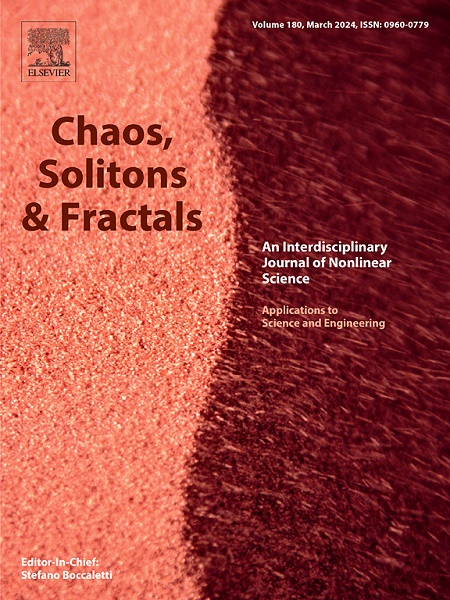起始类kdv孤子气体的分布函数
IF 5.6
1区 数学
Q1 MATHEMATICS, INTERDISCIPLINARY APPLICATIONS
引用次数: 0
摘要
以具有随机幅值和相位的间隔孤子和紧子(孤子气体)序列为例,研究了具有随机幅值和相位的间隔孤子和紧子序列的统计性质——具有幂非线性(包括分数非线性)的广义Korteweg-de Vries方程的解。在模拟孤子湍流的问题中,这些序列被用来指定初始条件。本文证明了在单极孤子气体的情况下,存在一个临界密度,使得与同极性孤子的排斥力有关的广义Korteweg-de Vries方程中的非线性类型无关的孤子气体是足够稀薄的。相反,双极孤子气体的密度可以是任意的,因为不同极性的孤子被吸引。计算了波场的第一统计矩。计算了孤子序列和紧子序列的概率密度函数。注意到在这些函数中由于指数孤子尾重叠而产生的小场值区域的一个特征。这一特征在占据有限空间体积的紧子领域中是不存在的。本文给出了孤立波振幅分布函数的各种近似分布函数的计算实例。本文章由计算机程序翻译,如有差异,请以英文原文为准。
Distribution functions of the initiated KdV-like solitonic gas
The statistical properties of a sequence of spaced solitons and compactons (soliton gas) with random amplitudes and phases are studied based on the example of solitary waves – solutions of the generalized Korteweg-de Vries equation with power nonlinearity (including fractional nonlinearity). Such sequences are used to specify initial conditions in problems of modeling soliton turbulence. It is shown in the paper that in the case of a unipolar soliton gas, there is a critical density, so that the soliton gas is sufficiently rarefied regardless of the nonlinearity type in the generalized Korteweg-de Vries equation, which is associated with the repulsion of the same polarity solitons. On the contrary, the density of the bipolar soliton gas can be any, since solitons of different polarities are attracted. The first statistical moments of the wave field are calculated. The probability density functions of the soliton and compacton sequence are calculated. A feature in these functions in the region of small field values due to the overlap of exponential soliton tails is noted. This feature is absent in the field of compactons occupying the finite space volume. The paper provides calculation examples of distribution functions for various approximations to the distribution function of the solitary wave amplitudes.
求助全文
通过发布文献求助,成功后即可免费获取论文全文。
去求助
来源期刊

Chaos Solitons & Fractals
物理-数学跨学科应用
CiteScore
13.20
自引率
10.30%
发文量
1087
审稿时长
9 months
期刊介绍:
Chaos, Solitons & Fractals strives to establish itself as a premier journal in the interdisciplinary realm of Nonlinear Science, Non-equilibrium, and Complex Phenomena. It welcomes submissions covering a broad spectrum of topics within this field, including dynamics, non-equilibrium processes in physics, chemistry, and geophysics, complex matter and networks, mathematical models, computational biology, applications to quantum and mesoscopic phenomena, fluctuations and random processes, self-organization, and social phenomena.
 求助内容:
求助内容: 应助结果提醒方式:
应助结果提醒方式:


